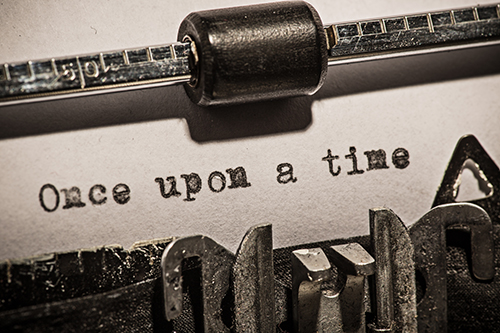Table of Contents
GOING GRAPHIC!
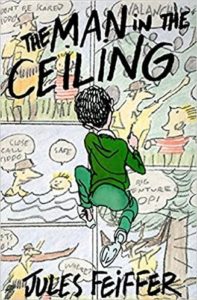
|
The main character of Jules Feiffer’s The Man in the Ceiling (HarperCollins, 1995) is young Jimmy Jibbets, who loves making comic books and wants to be a cartoonist someday – despite a total lack of support from his family. A witty take on art and the human condition for ages 8-12. |
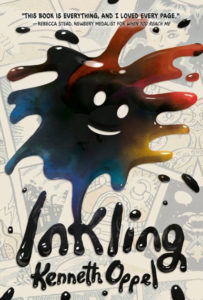 |
In Kenneth Oppel’s Inkling (Yearling, 2020), Ethan’s graphic artist dad has writer’s block and Ethan – who can’t draw – is supposed to be illustrating a class project. Then Inkling – a helpful and creative blob of ink – leaps off the page of his dad’s sketchbook. Creativity flourishes – until Inkling is kidnapped. For ages 8-12. |
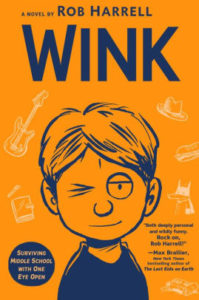 |
In Rob Harrell’s Wink (Dial Books, 2020), Ross Maloy struggles with 7th grade and a rare form of eye cancer – while forming a rock-‘n-roll band and writing his epic comicstrip, Batpig. For ages 9-13. |
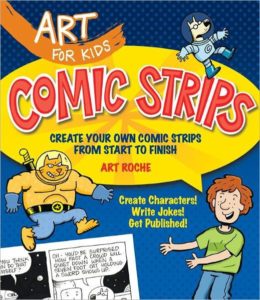
|
Art Roche’s Art for Kids: Comic Strips (Sterling, 2011) has complete instructions for creating 3-panel comic strips, variously covering story line, characters, layout and design, and the tricky business of making an effective joke. For ages 9-13. |
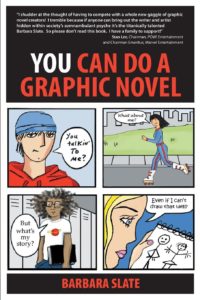
|
Barbara Slate’s 200-page You Can Do a Graphic Novel (Alpha Books, 2010) is a guide to graphic novels in the form of a graphic novel. It covers all the basics, including drawing, creating characters, plots, and layouts. One chapter is devoted to samples of student work. For ages 11 and up. |
| The You Can Do a Graphic Novel Teacher’s Guide is a detailed guide to accompany the book, with instructions, suggestions, and printable worksheets and templates. | |
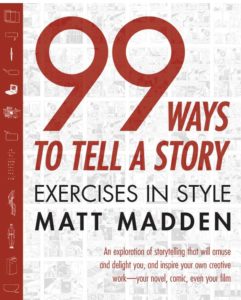
|
In Matt Madden’s 99 Ways to Tell a Story (Chamberlain Brothers, 2005), Madden tells the same story in 99 single-page comics, each time in a different way. The story isn’t much – a man goes to the refrigerator and then forgets what he’s looking for – but the possibilities are fascinating, as Madden adds characters and points of view, and experiments with flashbacks, free verse, color effects, art styles, page design, close-ups and long-shots. A great potential project for ages 14 and up. |
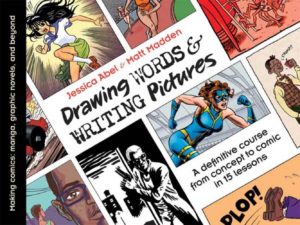
|
By Jessica Abel and Matt Madden, Drawing Words and Writing Pictures (First Second, 2008) is a 15-lesson all-in-one-book course on making comics, manga, and graphic novels. For teens and adults. |
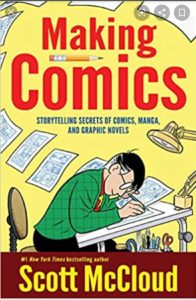
|
Scott McCloud’s Making Comics (William Morrow, 2006) is a comic-book-style explanation of how drawings can be used to tell a story, covering everything from the “reader’s camera” to facial expressions, figure drawing, word balloons, background, tools and techniques, and publishing markets. For teens and adults. |
| From Donna Young, at Comic Strip Printables, visitors can choose among many different cartoon panel templates. Print your own comic-strip and graphic-novel paper. |
BOOKS WITH CHARACTERS WHO WRITE
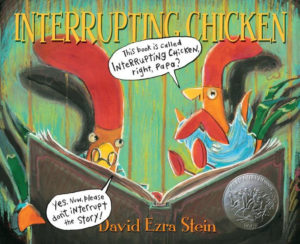
|
In David Ezra Stein’s Interrupting Chicken (Candlewick, 2010), a patient father rooster (in spectacles and carpet slippers) tucks his offspring, a little red chicken, into bed and attempts to read a bedtime story – only to be continually interrupted by his daughter, who can’t bear the suspense. “Out jumped a little red chicken,” she cries, as her father reaches a crucial point in Hansel and Gretel, “and she said ‘DON’T GO IN! SHE’S A WITCH!’ So Hansel and Gretel didn’t. THE END!” Finally the little red chicken decides to write a story of her own, only to be interrupted by her tired father’s snores. For ages 3-7. |
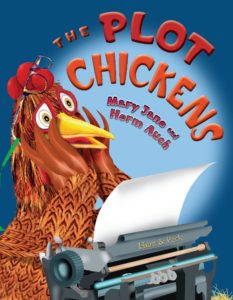
|
Henrietta, of Mary Ann Auch and Herm Auch’s The Plot Chickens (Holiday House, 2010), is a very bookish chicken who decides, since she so loves reading, that it would be fun to write a book. Unfortunately it’s rejected for publication – and when Henrietta self-publishes, it gets a terrible review. Henrietta is thoroughly discouraged – until she discovers that the children at the library have voted her book one of the best of the year. There’s a lot of wordplay based on the word “egg.” For ages 4-8. |
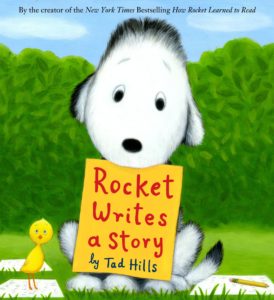
|
In Tad Hills’s Rocket Writes a Story (Schwartz & Wade, 2012), Rocket – with the help of the little yellow bird, his teacher in How Rocket Learned to Read (2010) – creates a wonderful word tree, hung with all his favorite words (feather, tree, snail, rock, bug, book, bird, dog). Then he decides to write a story using his word collection and – though he hits some bumps on the way (there’s crossing out and growling) – he eventually, adorably, succeeds. For ages 4-8. |
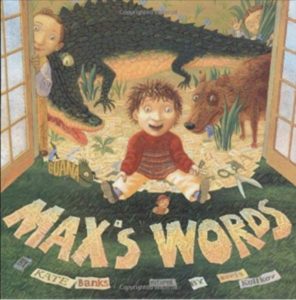
|
In Kate Banks’s Max’s Words (Farrar, Straus & Giroux, 2006), Max’s brother Benjamin collects stamps and brother Karl collects coins – so Max, who wants a collection too, decides to collect words. (“Very funny, Max,” said Karl.) Max begins with small words cut from magazines and newspapers, then proceeds to bigger and better words, and finally begins to arrange them to make stories. The word illustrations are wonderful, in a range of sizes and fonts. Some are miniature concrete poems: “hungry” has a bite taken out of it; “park” is surrounded by trees; “baseball” is shaped like a baseball bat. For ages 4-8. |
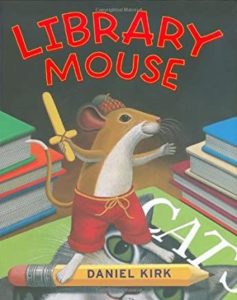
|
Ralph, the mouse of Daniel Kirk’s Library Mouse (Harry N. Abrams, 2007), lives behind the reference book section in the library and spends all his time reading. He enjoys books so much that he eventually decides to write one about himself – Squeak! A Mouse’s Life – using a little mirror to draw his self-portrait. He follows it up with a mystery story (The Lonely Cheese and the Mystery of Mouse Mansion) and soon is so popular that the librarian invites him to “Meet the Author” day. When the children arrive, however, they find – instead of the author – a series of blank books and mirrors to help them write books of their own. For ages 4-8. |
| The World of Library Mouse is a teaching guide with activities to accompany Daniel Kirk’s Library Mouse books. | |
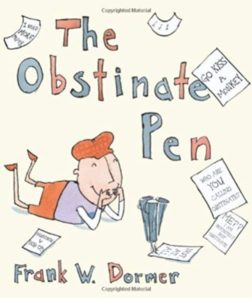
|
In Frank W. Dormer’s The Obstinate Pen (Henry Holt and Company, 2012), Uncle Flood’s new pen has a mind of its own. When he tries to write “The following story is all true,” the pen – who doesn’t believe him – instead inscribes “You have a BIG nose.” Uncle Flood, frustrated, finally chucks the pen out the window, where it ends up passing through the hands of several grown-ups, forcing each of them to write something far more honest (and ruder) than they had planned. Finally it reaches the hands of Flood’s story-writing little nephew Horace, who knows how to make it cooperate. For ages 4-8. |
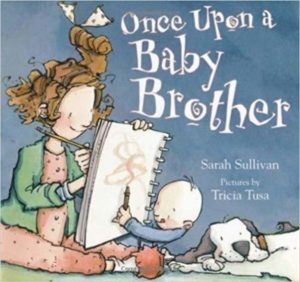
|
In Sarah Sullivan’s Once Upon a Baby Brother (Farrar, Straus & Giroux, 2010), Lizzie’s story-telling talent is admired by all – until her baby brother Marvin comes along. Lizzie, feeling neglected, begins writing stories about a beautiful princess and a villain – Marvin as ugly prince, fearsome Marvinosaurus, dangerous Marvinfish. Challenged to write a comic book by her teacher, however, Lizzie suffers from writer’s block – until Marvin returns from a visit to Grandma. Once she realizes that she loves her little brother after all, inspiration strikes, and she creates “The Amazing Adventures of Marvin (with Big George the Wonder Dog).” For ages 4-9.
Project: try using Sarah’s Marvin snippets as story starters. |
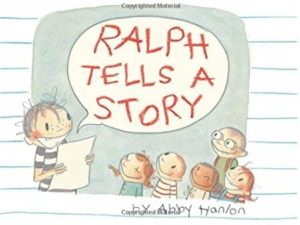
|
“Stories are everywhere!” Ralph’s teacher insists – but Ralph, of Abbie Hanlon’s Ralph Tells a Story (Amazon Children’s Publishing, 2012) has a massive case of writer’s block. Finally Ralph remembers finding an inchworm in the park, which – with the help of questions from classmates – turns into a lively story. By the end of the book, Ralph’s endless stack dismal papers with nothing on them but his name has turned into an entire library of books, with titles like “When Milk Came Out of My Nose” and “The Scariest Hamster.” For ages 6-8. |
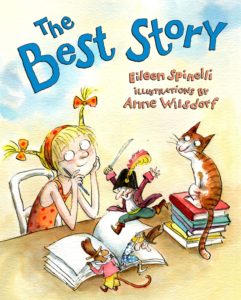
|
The narrator of Eileen Spinelli’s The Best Story (Dial, 2008) wants to win the library’s story-writing contest: the prize is a roller coaster ride with her favorite author. Her brother Tim thinks the best stories are packed with action – but adding a pirate, a tornado, and a great white shark doesn’t seem to do the trick. Her father claims the best stories are funny; her Aunt Jane wants a tearjerker; her cousin Anika wants romance. Finally her mother suggests that she write from her heart – and finally she comes up with a “best story” all her own. For ages 6-9. |
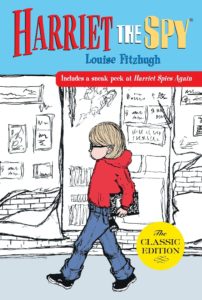
|
Harriet, of Louise Fitzhugh’s Harriet the Spy (Yearling, 2001) plans to be a famous author someday – and as practice she keeps a notebook in which she writes down observations and opinions derived from spying on neighbors and classmates. When Harriet’s classmates get their hands on the notebook and read Harriet’s comments, they’re furious, and form a Spy Catcher Club devoted to making Harriet’s life miserable. Harriet eventually works it with out, with advice from her nanny, Ole Golly, and her performance as editor of the school newspaper. For ages 8 and up. (For grown-ups who miss Harriet, see Miss Buncle’s Book below.) |
| Harriet the Spy (1996) is rated PG. | |
| Learn more about the book at NPR’s Unapologetically Harriet, the Misfit Spy. | |
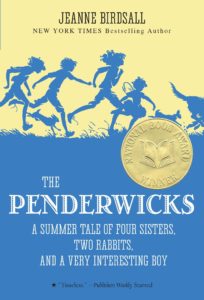
|
In Jeanne Birdsall’s The Penderwicks: A Summer Tale of Four Sisters, Two Rabbits, and a Very Interesting Boy (Yearling, 2007), Rosalind, Skye, Jane, Batty (age four, who wears butterfly wings) and their Latin-quoting botanist father vacation at a cottage next to a massive estate, where they meet two rabbits, the dreadful Mrs. Tifton, her even more dreadful boyfriend (Dexter Dupree), and Mrs. Tifton’s very nice son, Jeffrey, whom they save from military boarding school. In honor of which, ten-year-old Jane, an indefatigable writer and author of the exciting Sabrina Starr novels, writes her latest in which Sabrina Rescues a Boy. For ages 8 and up. |
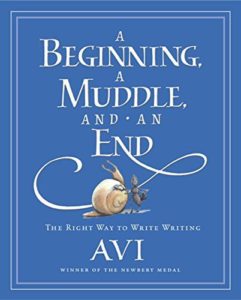
|
Avi’s A Beginning, A Muddle, and an End: The Right Way to Write Writing (Harcourt Children’s Books, 2008) – charmingly illustrated by Tricia Tusa – features Avon, a very well-read snail, and his friend Edward the ant, characters who first appeared in The End of the Beginning (2004). Now Avon is determined to write a book – which he proceeds to muddle through, with a list of writer’s rules, a lot of clever word play, and some not-always-helpful help from Edward. For ages 8-12. |
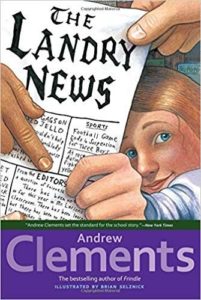
|
Andrew Clements’s The Landry News (Atheneum Books for Young Readers, 2000) is the story of a young writer making a difference. New girl Cara Landry, upset that her fifth-grade teacher, Mr. Larson, “does not teach,” begins publishing a newspaper, The Landry News, and criticizes his behavior in her first editorial. Soon the entire class is involved with the newspaper; Mr. Larson, fired up, is teaching again; and the school principal and the town are involved in a struggle involving the First Amendment. For ages 8-12. |
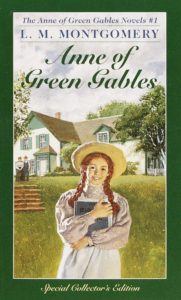
|
The title character of L.M. Montgomery’s Anne of Green Gables, originally published in 1908, is bookish, dramatic, and trouble-prone orphan Anne Shirley, who writes overblown romances but ultimately realizes where her heart lies – and writes a successful book about the life she loves in Avonlea. Seven sequels. For ages 9 and up. |
| Of the many film versions, Kevin Sullivan’s award-winning Anne of Green Gables, with Megan Follows, Richard Farnsworth, and Colleen Dewhurst, is generally thought to be the most true to the books. | |
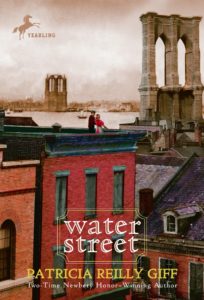
|
Following on Nory Ryan’s Song and Maggie’s Door, Patricia Reilly Giff’s Water Street (Yearling, 2008) continues the tale of Irish immigrants in 19th-century America. The year is 1875; the Brooklyn Bridge is going up; and main characters 13-year-old Bird Mallon and Thomas Neary live in the same Brooklyn tenement building. Bird wants to be a midwife and healer, like her mother; Thomas wants to be a writer. (“Thomas had made himself a notebook with cardboard covers and sewed the pages, but if the book wasn’t handy, he used anything, paper bags from the market, or even the edges of the newspaper. He wrote stories about anything he saw, and he saw a lot.”) For ages 9-13. |
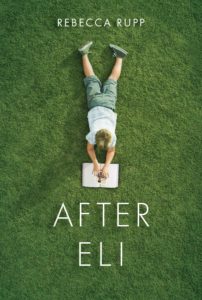
|
In Rebecca Rupp’s After Eli (Candlewick, 2012), 14-year-old Danny struggles to come to terms with the death of his older brother by writing in his Book of the Dead, in which he chronicles how people die, and why. Starred reviews from Kirkus, Booklist, and Publisher’s Weekly; winner of a Parent’s Choice Gold Award. For ages 9 and up. |
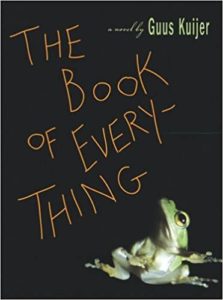
|
In Guus Kuijer’s award-winning The Book of Everything (Arthur A. Levine Books, 2006), Thomas – a very unusual nine-year-old, who sees things no one else does, loves one-legged Eliza, and has heart-to-heart talks with Jesus – comes to terms with life with his abusive father by recording all his thoughts in his Book of Everything. For ages 12 and up. |
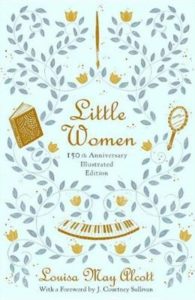
|
Louisa May Alcott’s classic Little Women, originally published in 1868, is available in many editions. Everyone’s favorite character is creative tomboy Jo, who writes family plays, short stories, and a newspaper, and eventually – after a couple of false starts, and with the advice of German professor Friedrich Bhaer (with whom she falls in love) – becomes a published author. For ages 10 and up. |
| The 1994 film version of Little Women stars Winona Ryder as Jo and Gabriel Byrne as Professor Bhaer, which casting helps a lot of readers get over the fact that Jo didn’t marry Laurie. Rated PG. Also see the wonderful Little Women (2019), directed by Greta Gerwig. | |
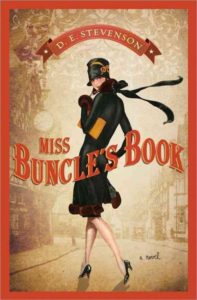
|
In D.E. Stevenson’s Miss Buncle’s Book (Sourcebooks Landmark, 2012), originally published in 1934, dowdy Barbara Buncle has written a book about life in the little English village of Copperfield – which exactly replicates the people and events of her own village, Silverstream. Readers, seeing themselves, either become outraged or have sudden revelations or both. It’s delightful and ends with Miss Buncle marrying her publisher. For teens and adults who miss Harriet the Spy. |
